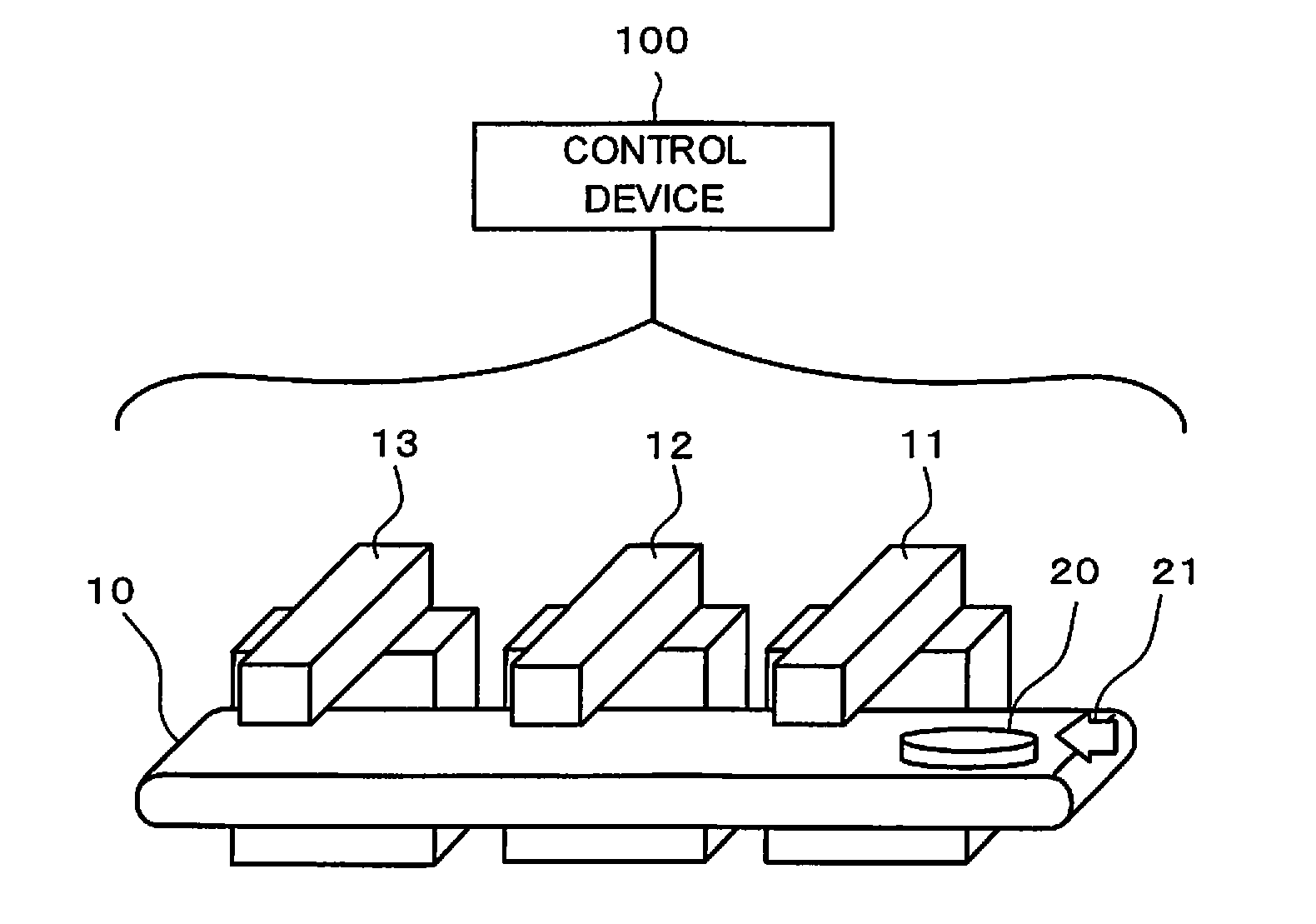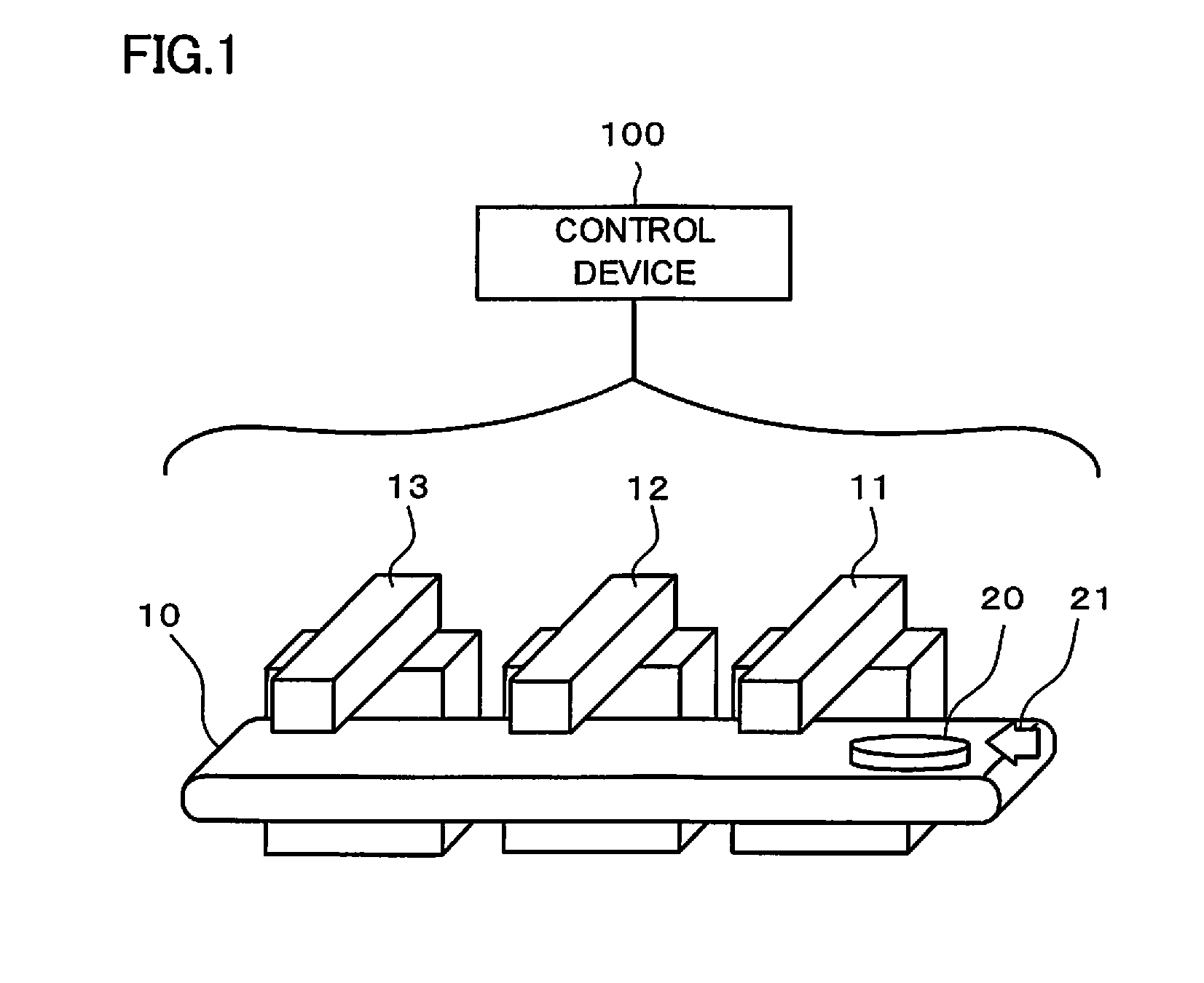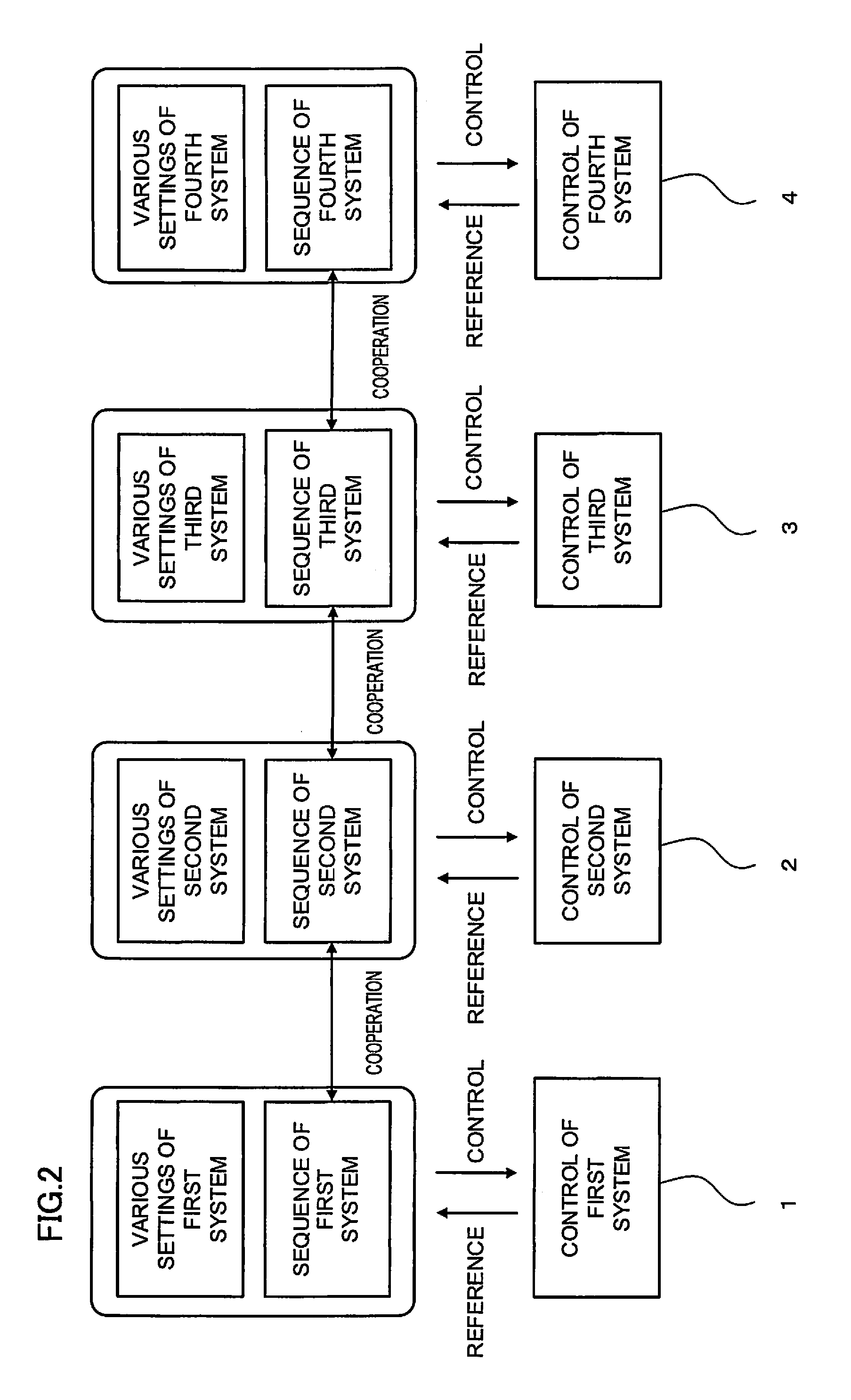Control device capable of centrally managing control by grouping a plurality of systems
a control device and system technology, applied in the field of control devices, can solve the problems of high difficulty in constructing cooperative sequence programs, large amount of construction, and large amount of labor, and achieve the effect of convenient application and convenient synchronization between systems
- Summary
- Abstract
- Description
- Claims
- Application Information
AI Technical Summary
Benefits of technology
Problems solved by technology
Method used
Image
Examples
first embodiment
[0039]The system constituted from a belt conveyor and three imprinters shown in FIG. 1 is taken as an example. The system includes the belt conveyor 10, the first imprinter 11, the second imprinter 12, a third imprinter 13, and a control device 100 that controls the belt conveyor 10, the first imprinter 11, the second imprinter 12, and the third imprinter 13.
[0040]If, for example, the speed of the belt conveyor 10 changes in any timing, the three imprinters 11, 12, 13 also need to change the speed in synchronization with the belt conveyor 10 and if the synchronization is not implemented, imprinting in wrong positions occurs.
[0041]If, as shown in FIG. 2, control 1 of a first system is set to the control of the belt conveyor 10 and controls 2, 3, 4 of second to fourth systems is set to the control of the imprinters 11, 12, 13 respectively, a synchronizing speed change can be implemented by creating a sequence program that provides various settings and inter-system cooperation, but it ...
example
[0047]If the setting of an override control signal that changes the speed to 250% for execution and the setting of a parameter that limits the maximum speed to 2000 mm / min exist for a program command of moving an axis at 1000 mm / min, an operation of moving the axis at 2000 mm / min is obtained as a result of analyzing the settings.
[0048]In the case of the example shown in FIG. 6, the input / change / limitation / output described below is performed.
[0049]Program command analysis: Speed command of 1000 mm / min is input[0050]→Control signal analysis: Speed command is changed to 2500 mm / min[0051]→Control parameter analysis: Speed command is limited to 2000 mm / min[0052]→Final output: Motor is rotated at 2000 mm / min
[0053]FIG. 7 is a diagram illustrating control of a system according to the present invention. The system control is performed by a control device that controls machine tools and industrial machines. In the present invention, as a concrete implementation method of a mode in which a sla...
second embodiment
[0067]Incidentally, the machine configuration may be changed depending on the usage of machines. For example, the machine configuration shown in the first embodiment described above includes three imprinters, but the number of needed imprinters may increase or decrease due to a change of the target or the like.
[0068]FIG. 8 shows an example illustrating a situation in which machining is performed while switching the system group whenever necessary in accordance with the target and including the one belt conveyor 10 and four imprinters 11, 12, 13, 14. When, as shown in FIG. 8A, the target is a circular workpiece, the fourth imprinter 14 is not needed, but when, as shown in FIG. 8B, the target is a rectangular workpiece, the fourth imprinter 14 needs to be used. In such a case, an operator changes the setting of the system group whenever necessary in accordance with the target and deals with the situation by excluding a fifth system (fourth imprinter 14) from the system group for a cir...
PUM
 Login to View More
Login to View More Abstract
Description
Claims
Application Information
 Login to View More
Login to View More - R&D
- Intellectual Property
- Life Sciences
- Materials
- Tech Scout
- Unparalleled Data Quality
- Higher Quality Content
- 60% Fewer Hallucinations
Browse by: Latest US Patents, China's latest patents, Technical Efficacy Thesaurus, Application Domain, Technology Topic, Popular Technical Reports.
© 2025 PatSnap. All rights reserved.Legal|Privacy policy|Modern Slavery Act Transparency Statement|Sitemap|About US| Contact US: help@patsnap.com



